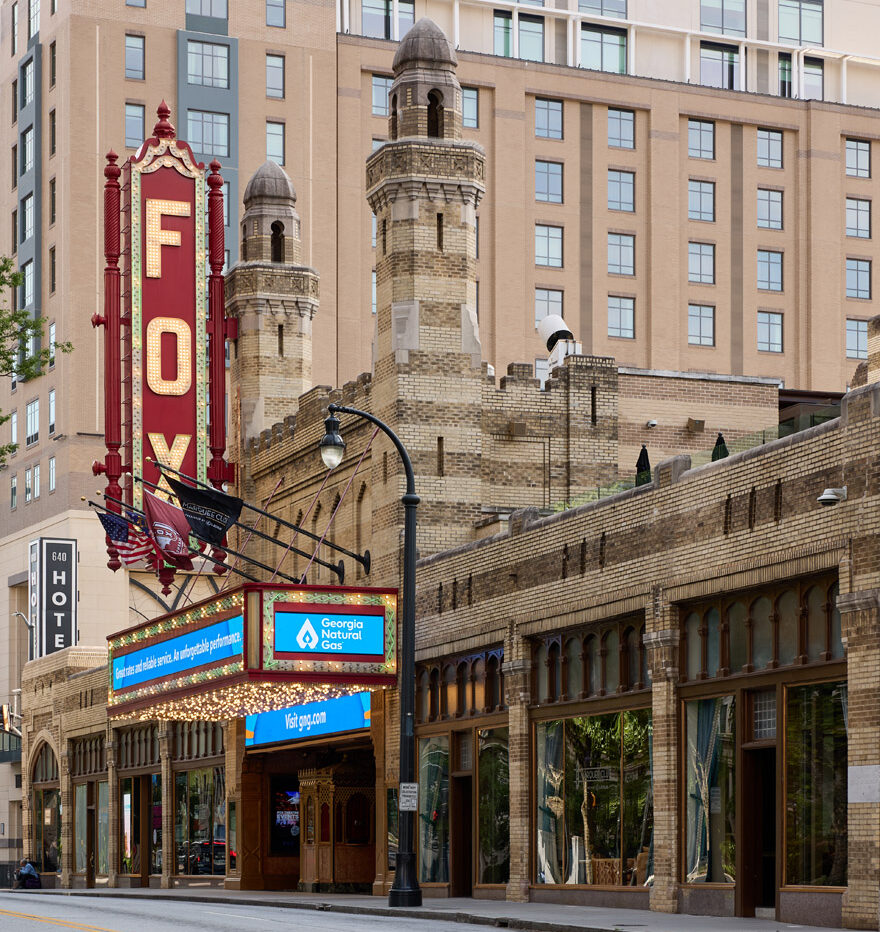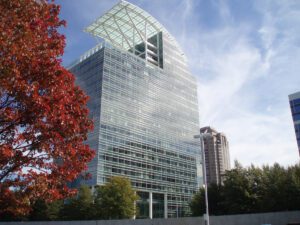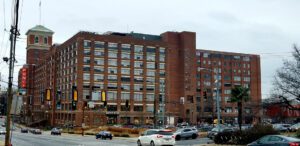Architecture experts weigh in on what makes a building iconic.

Atlanta is fortunate to have an array of commercial buildings with instant identity: The King and Queen structures overlooking the Perimeter in Sandy Springs, the circular Westin Peachtree Plaza downtown and the Bank of America Plaza in Midtown, which, at 1,023 feet, holds the record as the tallest building in the Southeast.
And then there are others with names even long-time locals aren’t sure about. That one at Peachtree and Oak Valley roads with the ski jump—or is it a full sail?—on the roof is The Pinnacle. Symphony Tower is often referred to as the “Batman building” for the glass wings that soar above its 41 stories at 1180 Peachtree St.

Whatever their official names, they represent structures with some iconic architectural features that make them memorable. But experts say there’s often more to it than that.
“There has to be some kind of aesthetic component that makes a building stand out from the norm, something exceptional,” says Brian Bell, cofounder and principal in the architectural firm BLDGS and a Georgia Tech professor of practice in the same field. “A lot of architecture says it’s iconic, but most of it, quite honestly, just follows a formula. Sometimes just being new is good enough for some developments, but there are some in the city that are way ahead of that.”
For Bell, the redevelopment of the old Sears structure into Ponce City Market in the Old Fourth Ward neighborhood is one such project. While not a skyscraper, the renovated building has become a focal point for development in the area, including the Intuit hub and Mailchimp offices.
“Ponce City Market is creating a new and exciting kind of center in the city, a place people want to be, and that’s sort of magic,” Bell says. “It’s got a lot of energy and quality around the thinking, planning and building.”
Another notable for Bell is Three Alliance Center, the 30-story building on Lenox Road that appears to have windows poking out at different levels. “It’s playful with these windows that randomly pop out in different ways to play with light effects,” Bell says. “It captures your eye and stands out.”

For Tim Crimmins, professor emeritus of history at Georgia State with a specialty in urban history and historic preservation, some of the city’s oldies are still the goodies. “I love the Flat Iron and the Healey buildings downtown; they’re classics,” he says. “They represent Atlanta when it was a much different place, and all the skyscrapers were downtown. Now, their design and scale make them disappear in the modern landscape.”
Crimmins says it’s often hard to take in the full scale and magnitude of a skyscraper unless it’s viewed from far away. At ground level, viewers get a different impression, and that was the objective when many downtown classics went up.
“They were built at a time when people arrived by busses and trolleys,” he says. “Think of how prominent the Fox Theatre is at street level. That marquee on Peachtree is an icon. But it’s hard to get a view of the entire building.”
Many of today’s modern marvels are made for a driving population that impacts the design, Crimmins says. A good example is the Georgia Pacific Building, a downtown standout with its pink marble façade—and a parking deck on one side. But due to the building’s position atop the Peachtree ridge, the deck isn’t quite so obvious. “It even has its own columns to disguise it,” Crimmins says.
How a building interacts with the larger landscape is another factor in making it iconic, Bell says. “That’s an important role. Think of the Bank of America tower and the way the top glows at night through the open filigree. It’s always been one of my favorites, and it’s still playing a role: It’s a beacon.”
Atlanta-based writer and editor contributing to a number of local and state-wide publications. Instructor in Georgia State’s Communication department and Emory’s Continuing Education division.











